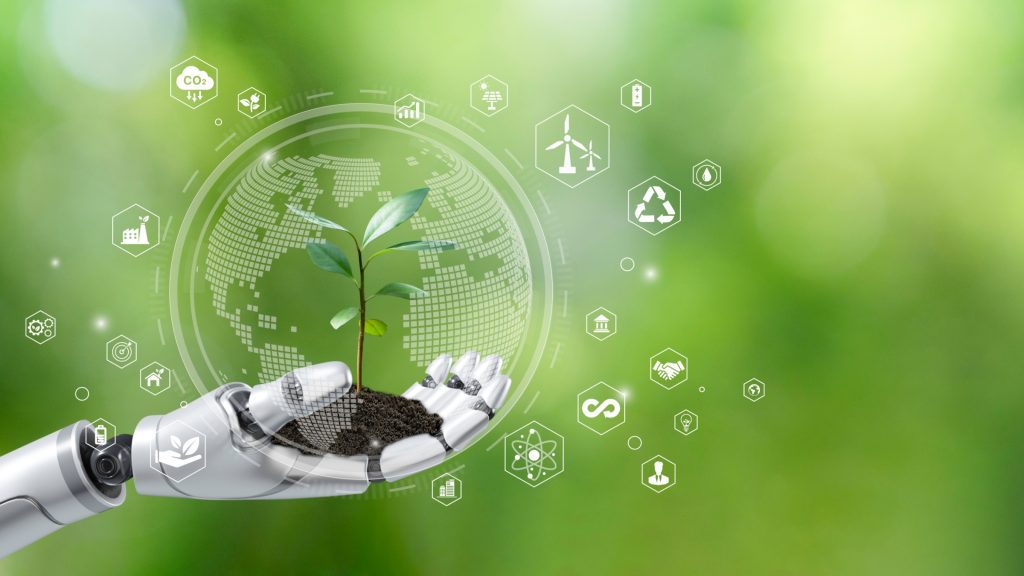
AI has the potential to AI harm the environment, but it can also be harnessed to promote sustainability.
AI is shaking up sectors from healthcare to manufacturing, promising efficiency and innovation. However, this technological leap comes with deeming environmental costs, particularly in energy consumption and the use of carbon-intensive materials.
Energy Efficiency in Data Centers
Data centers, the foundation of AI operations, are notorious for their heavy energy demands, with companies like Google and Facebook powering their data centers with renewable energy and utilizing AI to optimize energy consumption. By adopting energy-efficient processors and striving for carbon-neutral data centers, other tech companies can follow suit. AI can also be leveraged to enhance energy efficiency in various sectors, from smart grids to logistics, reducing the overall carbon footprint.
Tackling Digital Carbon Emissions
The extensive use of digital technology contributes significantly to global carbon emissions. The energy required for data transmission and device operation often comes from non-renewable sources. Addressing this issue requires a dual approach: transitioning data centers to renewable energy and adopting green coding practices. Green coding reduces computational demands, decreasing energy usage. Though resource-intensive initially, this practice promises long-term benefits by embedding sustainability into the core of technological operations.
Material Challenge
The surge in demand for AI technologies increases the need for raw materials like silicon and rare earth elements, potentially accelerating environmentally harmful mining activities. Additionally, the rapid expansion of AI harm could exacerbate electronic waste issues. Addressing these challenges involves enhancing recycling technologies and developing new materials to minimize environmental impacts. This strategy ensures that AI’s benefits do not come at the expense of sustainability.
Collaborative Efforts
Governments and international bodies play a crucial role in guiding AI development towards sustainability through regulations on energy use, carbon emissions, and waste management. Collaborative efforts between the public sector, private companies, and academic institutions can drive innovation in sustainable practices. Initiatives like the UN’s AI for Good platform exemplify how collective action can harness AI for environmental sustainability.
Awareness
For sustainable development of AI, broad societal engagement is essential. Educating developers, companies, and the public about sustainable practices and the environmental impacts of technology can drive consumer preferences towards greener products. This, in turn, encourages companies to prioritize sustainability in their operations.
AI’s Environmental Conservation
Despite its challenges, AI holds immense potential to address complex environmental issues. From monitoring deforestation and biodiversity loss with AI-powered satellites to improving renewable energy storage through advanced algorithms, AI can be a powerful tool for environmental conservation.
Final Thoughts
While AI and emerging technologies present environmental challenges, they also offer unique opportunities to promote sustainability. By focusing on energy efficiency, lifecycle management, regulatory cooperation, and public engagement, we can ensure that technological progress aligns with environmental responsibilities. As we navigate this technological revolution, it is imperative to prioritize sustainability, paving the way for a future where innovation and environmental stewardship go hand in hand.
Inside Telecom provides you with an extensive list of content covering all aspects of the tech industry. Keep an eye on our Intelligent Tech sections to stay informed and up-to-date with our daily articles.